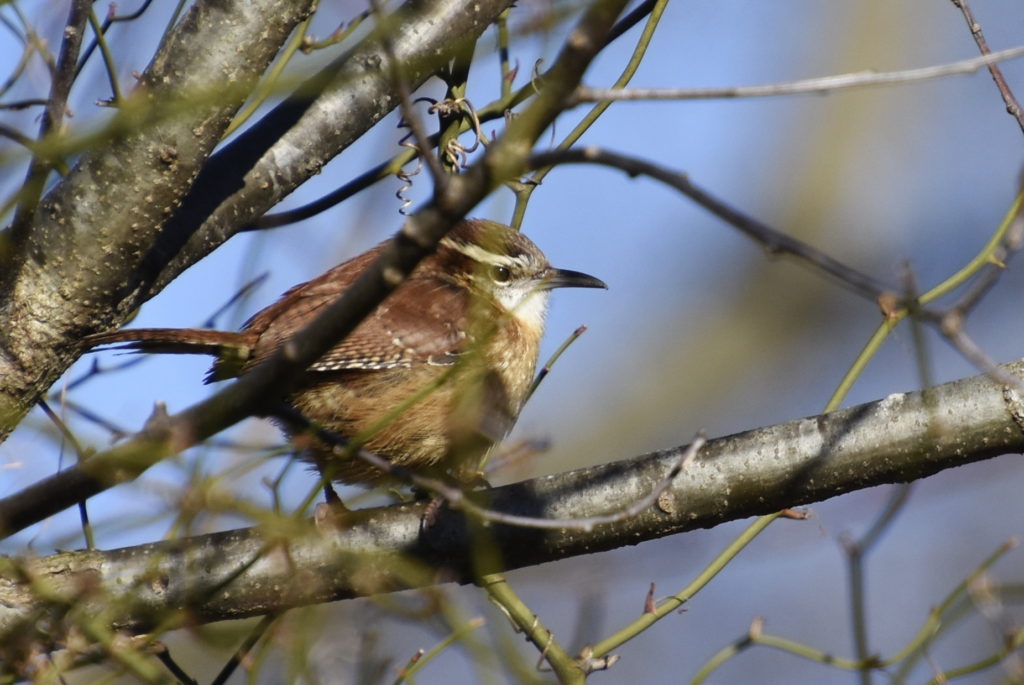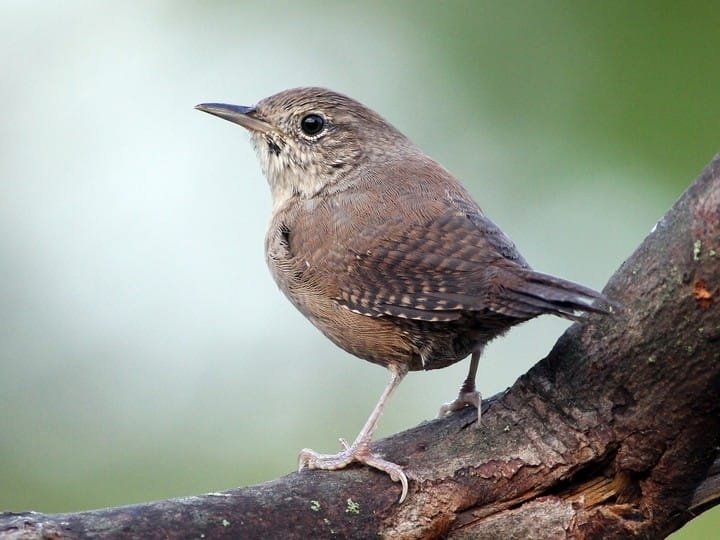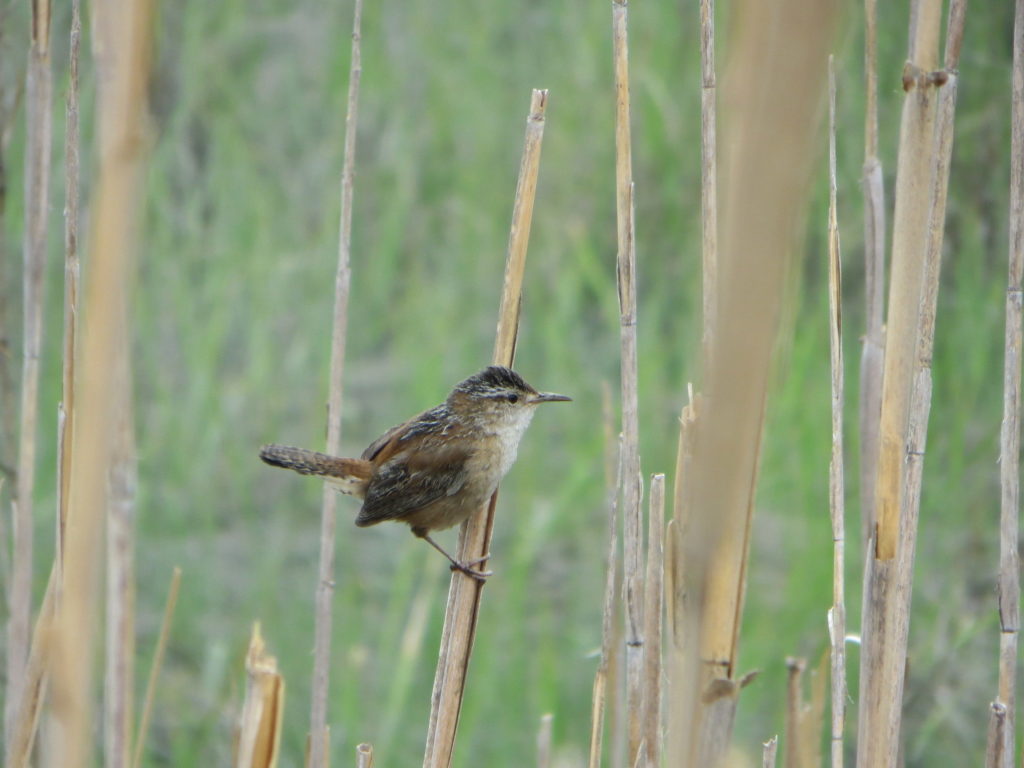Vocal Dynamos
In the world of boxing there is a mythical title of “pound for pound,” given to the best fighter in the world, irrelevant of weight class. In a non-pugilistic sense, very small birds can emit vocalizations of songs and calls that belie their diminutive size. Wrens fit the champion description, in defiance of their small size.
Wrens are almost entirely birds of the “New World,” with only one species, the Eurasian Wren, living in Europe, Asia and North Africa.
Wrens are one of the classic examples of “little brown jobs,” which can be quite active yet secretive as they work their way through tangles of vegetation in search of insects. One telltale characteristic is a short tail which is often raised above the back. They are various shades of brown, often with barring on their wings, tails and flanks, and long slender bills. Interestingly, while quite secretive they have adapted to living and nesting in close proximity to human populations. At Lumberton four wren species have been recorded: Carolina Wren, House Wren, Winter Wren, and Marsh Wren.
The Carolina Wren is a year round resident, and it is among the loudest and most vocal of the group; its song is a whistle-like “tweedle, tweedle, tweedle” or “tea-kettle, tea-kettle, tea-kettle”. Neighboring wrens very often sing duets back and forth. This is the most colorful of our wrens, with a warm reddish brown coloration and a very well defined white eye-stripe. It will often pop up at the feeder, on the deck rail, and along the edge of the perimeter path or the woodland trails.
The House Wren is a much plainer bird tending to be more grayish in color and lacking a distinctive eye-stripe. It sings with a series of trills and liquid-like gurgles, or scolds with a cat-like “mew.” Around the meadow, they often nest in bird houses, and even in Bluebird nest boxes, which they sometimes completely fill with sticks. These decoy nests may serve to prevent other birds from nesting in their territory.
The Winter Wren is extremely secretive and is the smallest of our wrens, with a very short tail that is often cocked up. It is found in wet shady woods and dense brush. Our woodland trails are ideal habitat for this bird in the winter. It is overall brownish in color and heavily streaked on wings, tail and flanks. It also has a white eyebrow, but not as distinct as the Carolina. It is present in our area only in the winter months.
The last and rarest of our wrens is the Marsh Wren. Although rare in inland marshes like the Rancocas, the Marsh Wren is actually common at the Shore in cattails and reeds. It is often seen balancing itself with each foot on a separate reed stalk. Like the other wrens it has a very gurgling song but it ends with a mechanical chatter like a sewing machine. It has a well defined eye-stripe and also a black and white striped collar extending from shoulder to shoulder across the back of the neck. If you are in a marsh environment and you hear a gurgling song it is most probably the Marsh Wren.
Text and photographs by Robert Koch, except House Wren, stock photo from Cornell Lab of Ornithology.




